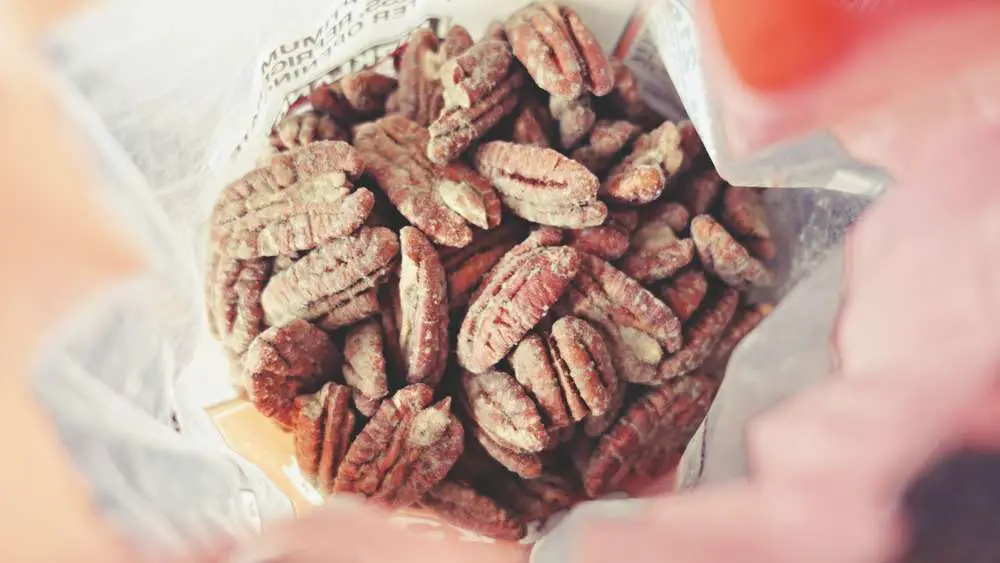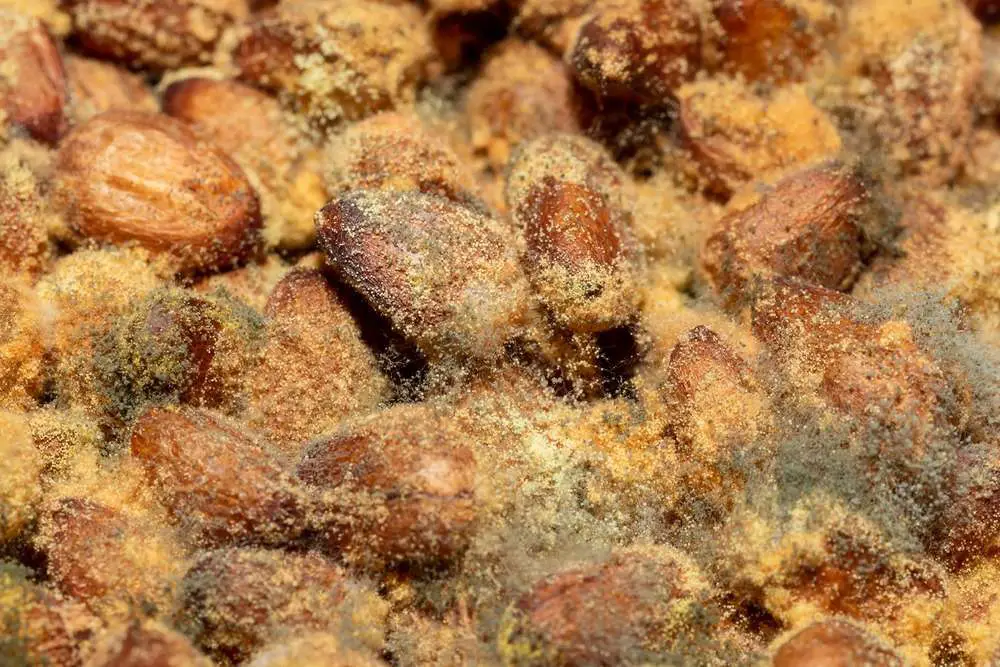- You are here:
- Home »
- Blog »
- Mold Advice »
- How to Remove Mold From Pecans (and Other Nuts)
How to Remove Mold From Pecans (and Other Nuts)

Pecans, peanuts, cashews, and other nuts are great snacks. They are high in nutritional value and taste great. But, did you know that nuts can develop mold? So, before you consume them, you need to make sure you remove mold from pecans and all types of nuts. Just how do you do that?
Removing mold from pecans and other nuts consists of 4 stages: handpicking, rinsing, dehydrating, and storing. You inspect each pecan for fungal growth, rinse it thoroughly with water, dehydrate it using a dehydrator, and store it in a sealed jar or container. In addition to removing mold, it also prevents further growth.
We look at the danger mold poses and the removal process in more detail.
Table of contents
How does mold grow on pecans and nuts?
Pecans generally develop mold after experiencing an injury. The fungus enters the nut through cracks. Unlike black mold, commonly found in homes, the fungus in nuts is pink in color.
Once the mold enters the nut, it spreads into the tissues. The fungus itself may not be a threat, but it produces mycotoxins which are dangerous to humans.
Is it dangerous to consume pecans and nuts that have mold?

Yes, you should avoid consuming pecans or any other type of nut with pink mold. The fungus produces mycotoxins, consumption of which can lead to long-term problems ranging from immune deficiency to cancer.
There are different types of mycotoxins found in nature. These are typically found in grains and seeds. Now, certain conditions need to be met for mycotoxin production in nuts. Finding pink mold in pecans doesn’t necessarily mean it has mycotoxin. So, if you remove the mold through the process we highlight, it will be safe to eat.
How to tell if your pecan is not safe to eat
The best way to identify if pecans are safe to eat is by inspecting them before consuming them. If you buy pecans with shells, look for scabs (small openings or black spots present on the shell of nuts) on the shell.
The presence of scabs means the nut likely has pink mold. If you get the pecans without shells, you can look for pink growth in the nut.
Avoid consuming pecans with pink mold because you never know if it contains mycotoxins or not. If you notice any fungal growth, you should remove it before consuming the nut.
How to remove mold from pecans (in 4 stages)
The mold removal process from pecans and other nuts is very different from the removal process of black mold in homes.
The process has 4 stages, these are:
- Handpick
- Rinse
- Dehydrate
- Store
Let’s look at these in more detail.
Stage 1 – Handpick
Inspect every piece of pecan and look for any sign of mold. A moldy pecan typically has discoloration (looks greenish or pinkish-brown), or appears shriveled (dried up). A great way to ensure you get mold-free pecans is to buy them when they are fresh. But even then, you need to check the pecans carefully for any fungus.
Stage 2 – Rinse
You’ll find many articles online that recommend soaking pecans in water to remove mold. But remember, mold requires moisture for growth. So, soaking it may be counterproductive. Instead, rinse the pecans thoroughly and pat them dry with a dry towel immediately.
Stage 3 – Dehydrate
The next step is to remove moisture from the pecan altogether. So, you kill the mold. To do this, we recommend you buy a dehydrator. The device effectively dehydrates the pecans and eliminates moisture that fungus may use to survive and grow.
Stage 4 – Store
Once you’ve dehydrated the pecans, store them properly. Use a glass jar or tightly packed container to keep them. Make sure to keep the jar or container in a cold, dark place.
How to prevent mold from growing on pecans (and other nuts)
The rinsing, dehydration, and storing process highlighted above also helps prevent mold growth. So, we recommend you go through the process every time you buy pecans or other nuts as a precaution. That way, it removes any fungus while also preventing them from growing.
If you can’t find a dark, cold place to keep the nuts, you can always store them in your fridge or freezer.
Final thoughts
Removing mold from pecans and other nuts is a simple process that we recommend you go through every time you purchase nuts. Think of it as a precautionary measure because you never know if the nut has mycotoxins or not. The long-term risk from consuming the toxins should be enough to make you want to ensure that the nut has no traces of mold before consumption.
About the Author Belal
Belal Rizvi enjoys writing about home improvement and do-it-yourself projects. He is an avid learner of the mold removal and dehumidifiers industry and provides insightful information about it to the readers.
